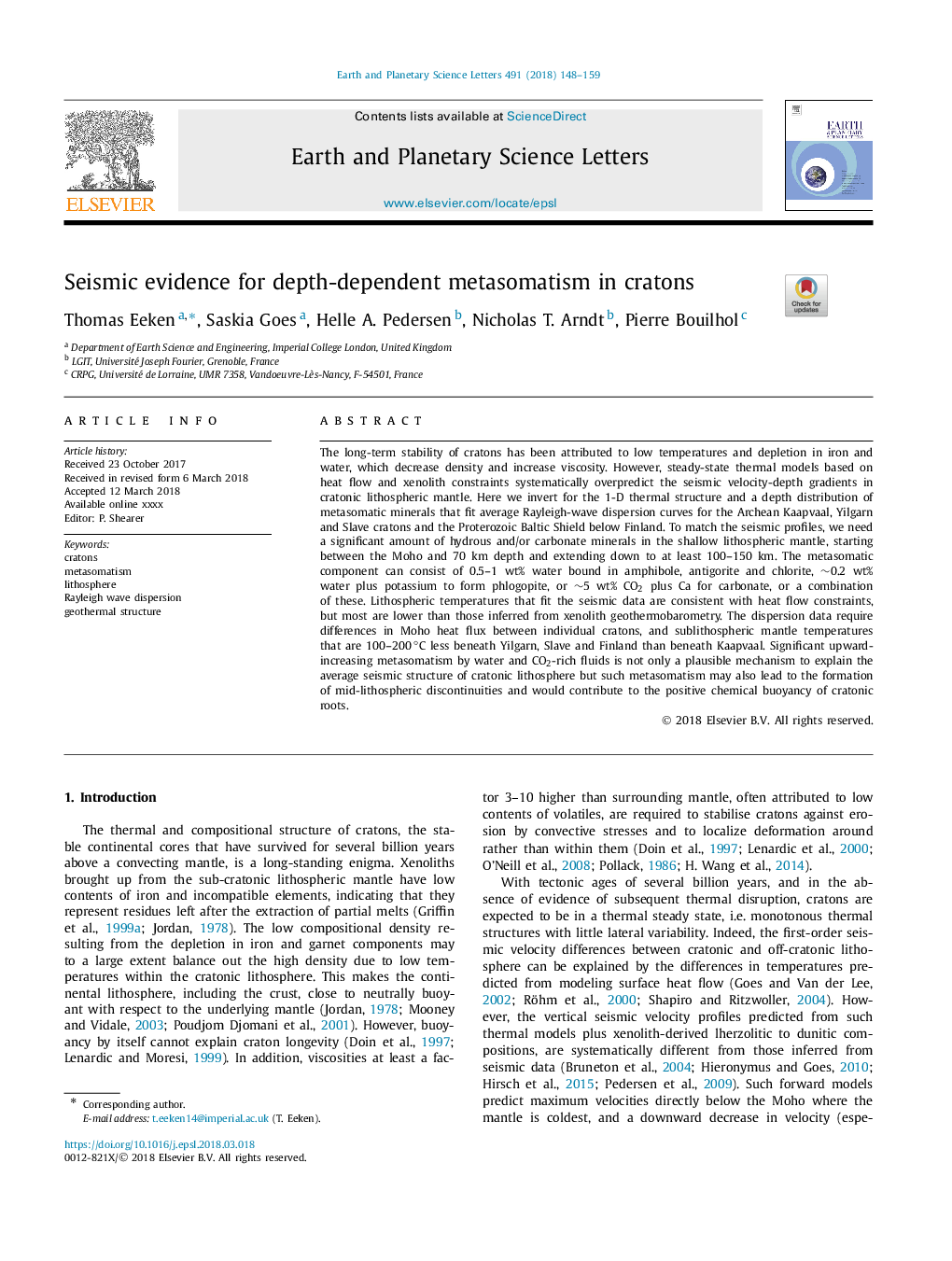| Article ID | Journal | Published Year | Pages | File Type |
|---|---|---|---|---|
| 8906944 | Earth and Planetary Science Letters | 2018 | 12 Pages |
Abstract
The long-term stability of cratons has been attributed to low temperatures and depletion in iron and water, which decrease density and increase viscosity. However, steady-state thermal models based on heat flow and xenolith constraints systematically overpredict the seismic velocity-depth gradients in cratonic lithospheric mantle. Here we invert for the 1-D thermal structure and a depth distribution of metasomatic minerals that fit average Rayleigh-wave dispersion curves for the Archean Kaapvaal, Yilgarn and Slave cratons and the Proterozoic Baltic Shield below Finland. To match the seismic profiles, we need a significant amount of hydrous and/or carbonate minerals in the shallow lithospheric mantle, starting between the Moho and 70 km depth and extending down to at least 100-150 km. The metasomatic component can consist of 0.5-1 wt% water bound in amphibole, antigorite and chlorite, â¼0.2 wt% water plus potassium to form phlogopite, or â¼5 wt% CO2 plus Ca for carbonate, or a combination of these. Lithospheric temperatures that fit the seismic data are consistent with heat flow constraints, but most are lower than those inferred from xenolith geothermobarometry. The dispersion data require differences in Moho heat flux between individual cratons, and sublithospheric mantle temperatures that are 100-200â°C less beneath Yilgarn, Slave and Finland than beneath Kaapvaal. Significant upward-increasing metasomatism by water and CO2-rich fluids is not only a plausible mechanism to explain the average seismic structure of cratonic lithosphere but such metasomatism may also lead to the formation of mid-lithospheric discontinuities and would contribute to the positive chemical buoyancy of cratonic roots.
Keywords
Related Topics
Physical Sciences and Engineering
Earth and Planetary Sciences
Earth and Planetary Sciences (General)
Authors
Thomas Eeken, Saskia Goes, Helle A. Pedersen, Nicholas T. Arndt, Pierre Bouilhol,
